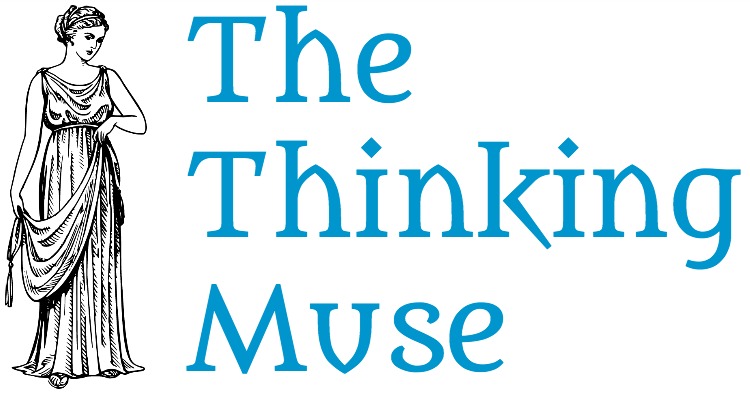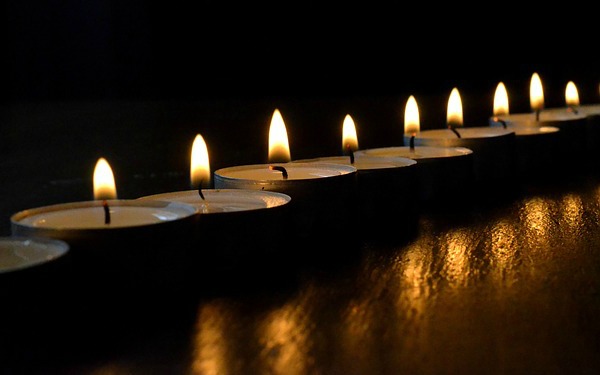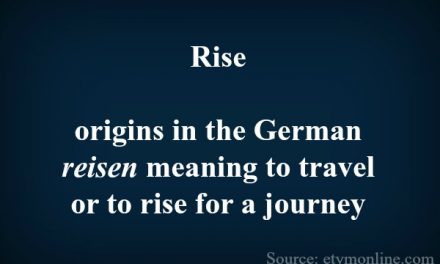Dancers turning, their bodies become a blur.
Fouetté. Pirouette. Spinning while raised up high on their toes in demi-pointe or full pointe. It is dizzying just to watch. If you want to see what I am talking about, check out a clip of 11 pirouettes from the movie White Nights.
Luckily, if you are trained to the point where you can do multiple turns then you have been trained to spot. Spotting involves keeping your gaze fixed on one spot as much as possible which helps with the dizziness. You can identify it by the snap of the head during rotation. Interestingly, some studies also show that dancers’ brains adapt after years of training to help suppress dizzy or off-balance feelings.
Wooziness aside, it is fascinating. Dancers and ice skaters practice countless hours to master the technique that allows them to turn. While they make it look easy, rest assured it is not. If you don’t believe me, just go try it. Go ahead, I won’t look. If you think you pulled it off, take a video of it and let me know how pretty it was.
Regardless, turns are another example of rotation in our lives that mesmerize us.
So, who are these people that seem to defy the laws of physics? What allows them to master the physical world while the rest of us bumble along and try not to look like a complete klutz?
One of them, some may argue the best of them, is named Mikhail Baryshnikov. The name is recognizable to even to most naive dance enthusiast. I want to know what is inside of him that enables him to be so great. If I can catch just a glimmer of his genius, perhaps it will enlighten me.
(See Related: Discover the Possibilities)
So, let’s take a look at Baryshnikov and the genius that allows him to master the (physical) world.
Mikhail Baryshnikov, a brief biography

Mikhail Baryshnikov. Credit: Knight-Foundation-via-Flickr-YoungArts-2010-CC-BY-SA-2.0-via-Wikimedia-Commons
Also known as Misha, Mikhail Baryshnikov was born in Latvia to Russian parents in 1948. His father was a Soviet military man. His mother, a country girl, exposed him to the arts, including ballet, as a young boy. It was there that he discovered what he wanted to do.
He began dance lessons with a friend of his mothers as a child. A few years later his mother died by suicide. As a self-proclaimed mama’s boy, this must have been difficult but he immersed himself in dance.
As a teenager he went to Leningrad and trained at the Vaganova Academy with Alexander Pushkin. Because he wasn’t tall, Baryshnikov was worried he wouldn’t be able to get leading-man roles. But Pushkin believed in him and provided world class training in addition to a gentle father figure.
His professional career began with the Kirov Ballet. Recognized for his technique and abilities as well as his stage presence, he immediately began as a soloist instead of the corps. However, the unending energy and independent spirit of Baryshnikov was constricted. Ballet in Russia was extremely rigid in its classicism. There weren’t a lot of opportunities and even less range. He was a bottled up force with no place to go.
In order to pursue a variety of dance, he defected to Canada in 1974 and eventually became an American citizen in 1986. With such a strong independent spirit it seems appropriate that he is an American.
For the last 30 years, he has been a part of the American Ballet Theatre and the New York City Ballet in various capacities. He also created the White Oak Dance Project and founded the Baryshnikov Arts Center. In addition to his dance-related work, he has acted in movies and television.
His boundless drive and prolific life has resulted in a large body of work. This work has resulted in many honors, some of which I included below…
- Kennedy Center Honors (2000)
- National Medal of Honor (2000)
- Commonwealth Award (2000)
- Chubb Fellowship (2003-2004)
- Jerome Robbins Award (2005)
- NYC Dance Alliance Foundation’s Ambassador for the Arts Award (2012)
- 2012 Vlcek Award
- Officer of the French Legion of Honor (2010)
Impressions of Baryshnikov
Doing research for this article, I came up with the conclusion that Baryshnikov is a complicated man. Despite the expressiveness shown on stage, Baryshnikov seems serious and reserved in interviews. Despite the mastery of his physical body, he is quite cerebral.
He reflects exactly the kind of life that he has lead. Cultured, intense, and beautiful. He doesn’t seem consumed by fame or fortune. He is driven internally. He believes in being yourself and making yourself. He values integrity and honor.
Hyperaware of the passing of time, he is desperate to not waste a minute of it. Perhaps because he appears to have a bottomless list of endeavors that he is compelled to pursue. I think we can all agree that the world would benefit from more of his great artistry.
He often mentions in interviews the word interesting. He thinks improvement or betterment is more interesting than being the best. He thinks life is more interesting if you don’t know what the future holds. He places a lot of value on that characteristic, which is telling of his cerebral nature. I think it is fitting that of the many adjectives that have been placed on him throughout his life, one of the most suitable is that of interesting.
This clip below is a lovely insight into Baryshnikov. It is inappropriately named Just like you because he is human, but we all really know he is superhuman.
Glimmers of his genius
Here is a selection of quotes from Baryshnikov on different aspects of humanity and life. Through these quotes, we can catch a sparkle of his inner workings. Read and learn.
Links have been provided to some of my topically related articles. As usual, my sources for the quotes as well as all the supporting information is in my resources section at the end of the article.
On dance and art…
“The curtain goes up and there were people dancing, beautiful light and lovely music and I was hooked. I didn’t question my impulses. I really wanted to do it. I knew from very beginning I can do it.” (Citizens of Humanity) on going to the ballet as a child
(See Related: How to find out what you should do when you grow up)
“I found that dance, music, and literature is how I made sense of the world.” (Brainy Quote)
(See Related: Why stories are irresistible)
“Dancing can reveal all the mystery that music conceals.” (Ballet Connections)
(See Related: The secrets of puzzles)
“When you open your arms, move your finger, the audience knows who you are, you know. And when the dancers move, together or individually, in a beautiful piece of choreography, and with gorgeous light and very arresting and evocative music, revealing themselves, it is such a privilege to be in the audience.” (The Glove and Mail)
On success or being the best…
“Look for inspiration, yes, or technique in certain things. But you would never be a dancer just like them and the more you try to imitate this person the more ridiculous you look, because you take your own coordination away from yourself … All academia is just a tool.” (The Arts Desk) on being true to your own artistry
“Perfection it’s a theory, you know, you cannot be a perfect human being…All you have is that hope …by the end of the day you will be a little better in all respects.” (Citizens of Humanity)
“In my opinion, better is something more interesting than best.” (Northwestern University)
“Any process is confronted with failure, but keep trying. This is what will make you a mensch and we can use a few more mensches in this world.” (Northwestern University)
On life…
“In retrospect, I think the failures might have been the most important experiences.” (Harvard Business Review by Allison Beard May 2011)
(See Related: 3 reasons to embrace change even though it is hard)
“I mean life is still ahead of me, hopefully. You don’t know how long it will last. That is why I use it to full capacity. Looking back at it, there is a lot of depressing stuff, a lot of tragic stuff, a lot of truly funny stuff. That mix is what life is about. But when you know what is ahead of you, that is not interesting.” (Vanity Fair)
“That’s life. The more you see life as something complicated and full of contradictions, the better you will understand yourself.” (Northwestern University)
“Do challenge yourself. Whatever you do to create a space for those big conversations. That is what will make your lives amount to more than your ambitions, your bank balance, or your job description. It will make your lives truly lived.” (Northwestern University)
Wrap up
It is awesome that he mentions creating a space for the big conversations. That is exactly what The Thinking Muse is all about. Asking questions, inspiring thought. Cool!
I am dance admirer. I am riveted by the blending of science and art. To master one’s own body to enable you to use the laws of physics as you will. This, in addition to the art of music and movement combined. Definitely inspired by the muses!
(See Related: Discover the wonder of the Galileo thermometer: Science and beauty intertwined)
(See Related: 9 muses to inspire you)
Dance is a universal human experience. Primal and enlightening all at the same time.
I think, I would hope, that everyone has had some joyful dance experience. Either participating or watching. If not, you have some living to do. My favorite dance memories involve dance team and going out dancing with my friends in college. Savor those moments, they are special.
If you had a memorable experience related to dance, share it with me. If you like what you read subscribe to monthly issues or follow me on Twitter.
Until next time, the world keeps spinning with us hanging on. Spin on. I hope you enjoyed the month of rotation.
Resources
Ballet dancers’ brains adapt to stop them feeling dizzy from Imperial College London
Ballet Quotes from Ballet Connections
Baryshnikov Arts Center Artistic Director from Baryshnikov Arts Center
Commencement: Northwestern’s Favorite Day! from Northwestern University
Gottlieb, Robert. Reading dance : a gathering of memoirs, reportage, criticism, profiles, interviews, and some uncategorizable extras. New York: Pantheon Books, 2008. Print.
Interview with Baryshnikov is a tricky pas de deux from The Glove and Mail
Life’s Work: An Interview with Mikhail Baryshnikov from Harvard Business Review by Allison Beard May 2011
Liza Minnelli Presents Dancer Mikhail Baryshnikov With 2012 Ambassador for the Arts Award Sept. 5 from Playbill
Mikhail Baryshnikov from Biography
Mikhail Baryshnikov from Citizens of Humanity
Mikhail Baryshnikov Doesn’t Care That More People Know Him from Sex and the City than from Dancing from Vanity Fair
Mikhail Baryshnikov in Conversation with Ian Brown from YouTube
Mikhail Baryshnikov: Just like you from YouTube
Q&A: Mikhail Baryshnikov, Part 1 from The Arts Desk
Mikhail Baryshnikov Quotes from Brainy Quote












































